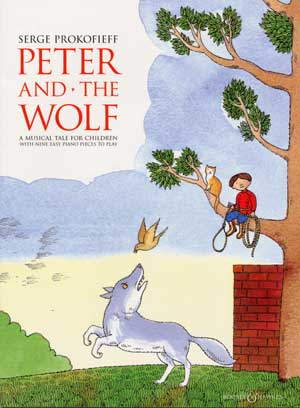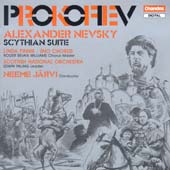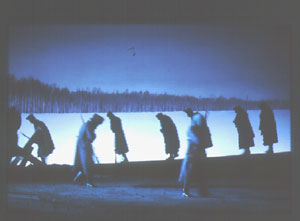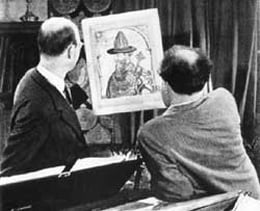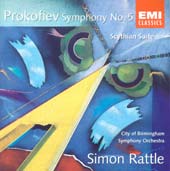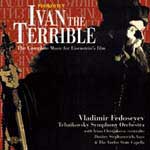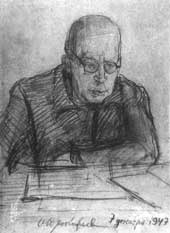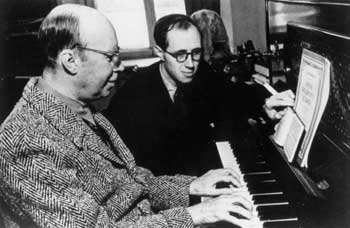Serge Prokofieff Timeline
A year by year alignment of Prokofieff's life and works
Biographical information by David Nice
The chronological list of works indicates the publisher of each work and provides links for further information on those published by Boosey & Hawkes
Born 11th April (23rd April New Calendar style) as Sontsovka in the Ukraine, a large country where his father worked as a managing agronomist.
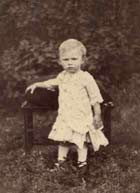
Encouraged by his mother’s playing, writes his first piano piece, Indian Galop.
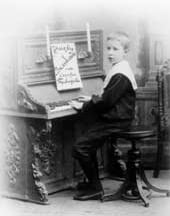
Sees Gounod’s Faust on his first visit to Moscow, and is inspired to compose his first opera, The Giant, performed before a select family audience.
The Giant Opera in three acts
Introduced through family connections, to Taneyev in Moscow, who recommends theory studies with Pomerantsev and two summers’ tuition at Sontsovka with Glière.
Desert Islands Opera (unfinished) (1900-02)
Symphony in G
Violin Sonata in C
Begins work on the Six Early Piano Sonatas (1903-09)
Meets Glazunov in St. Petersburg and is enrolled at the Conservatoire. Brings with him to his entrance examination four operas, two sonatas, a symphony and piano pieces.
The 1905 revolution disrupts classes at the Conservatoire and Prokofieff, although not an active sympathiser, signs one of the students’ petitions protesting at the dismissal of the leading composer-directors.
Undina Opera in four acts (1904-07) composed around this time
Friendship with Miaskovsky, an already-distinguished student ten years Prokofieff’s senior, compensates for dissatisfaction with Rimsky-Korsakov’s over-crowded orchestration classes and study of counterpoint with the uninspiring Liadov.
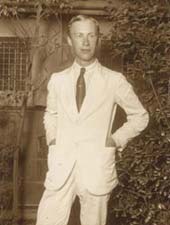
Plays some of his first distinctive piano pieces, two from op.2 and the now-celebrated Suggestion diabolique from op.4, to the leading lights of St. Petersburg’s Contemporary Music Evenings and gives his first public performance in the series on 18 December.
for piano (1907-08) BH
Starts composing his series of solo piano works around this time:
Ten Pieces for piano Op.12 (1906-13) For
Symphony No.2
His new compositions at the Spring examinations shock Liadov because of their Scriabinesque tendencies. Begins graduate studies as a ‘Free Artist’ of the Conservatoire including conducting under Nikolai Tcherepnin, who encourages a taste for Haydn and Mozart.
A Feast in Time of Plague Opera in one act (1908-09)
Moscow debut with premiere of Piano Sonata No.1. His father dies in July, which may account for the elegiac mood of the symphonic poem Autumn.
for orchestra BH
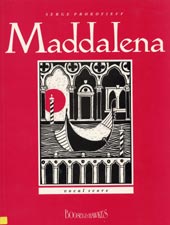
Piano Sonata No.1 published by Jurgenson – Prokofieff’s first work in print. Begins what he later regards as ‘my first more or less mature composition’, the whimsical Piano Concerto No.1, and a one-act opera based on a play with Wildean overtones, Maddalena; he is to orchestrate only the first of the four scenes.
for voice and piano (1910-11) BH
Piano Concerto No.1 (1911-12) For
Compositions include the utterly characteristic, motoric Toccata and the Piano Sonata No.2. Premieres Piano Concerto No.1 in Moscow, to a lively mixture of reactions.
Toccata in D minor for piano For
Piano Sonata No.2 in D minor For
Scherzo for four bassoons For
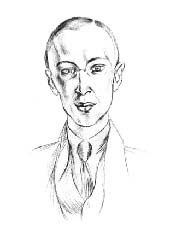
First performance of Piano Concerto No.2, with its more consciously brilliant role for the soloist, at an open-air concert in Pavlovsk; it provokes an uproar among the largely conservative members of the audience.
in G minor (1913, rev. 1923) BH
Graduates from the Conservatoire; the absence through illness of his authoritarian piano teacher, Anna Essipova, prompts him to perform his Piano Concerto No.1 in the final competition for the Rubinstein Prize – which he wins despite Glazunov’s opposition. Travels to London, where he sees the latest successes of Diaghilev’s Ballets Russes and meets the impresario. Diaghilev commissions a ballet on a savage, prehistoric theme. Arriving back in Russia just before the outbreak of war, works on the ballet (Ala et Lolly) alongside the voice-and-piano fairy tale The Ugly Duckling and completion of the piano Sarcasms.
(first version) (1909/14) BH
Completes Sarcasms for piano (1912, rev.14) For
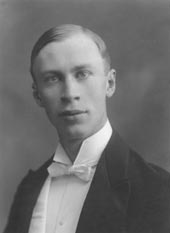
Travels to Italy to see Diaghilev, who rejects Ala et Lolly and commissions instead a ‘truly Russian’ folk tale (Chout or The Buffoon). Meets Stravinsky for the second time and joins him in a four-hand piano performance of Petrushka. Reworks material from Ala et Lolly as the Scythian Suite and begins The Gambler.
for voice and piano BH
Conducts the Scythian Suite in Petrograd (the re-named St. Petersburg); Glazunov walks out just before the end. Encouraged by the Mariinsky Theatre’s new conductor Albert Coates and its most innovative and influential director, Vsevolod Meyerhold, spends most of the year composing The Gambler. A more lyrical style surfaces in some of the Visions fugitives, completed the following year, and the op.27 songs to poems by Anna Akhmatova.
Opera in four acts and six scenes (1915/28) BH
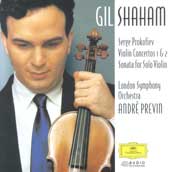
Witnesses the February Revolution in Petrograd, but spends much of the rest of the year away from the cities. Plans for production of The Gambler abandoned. A summer in the country yields two relatively untroubled works, the Classical Symphony and Violin Concerto No.1. Composes, by way of contrast, the wild, ‘Scythian’ cantata Seven, they are Seven. Completes Piano Sonatas Nos.3 and 4, based on sketches from the Conservatoire years.
in A minor (1908/17) BH
Gives two piano recitals and the premiere of the Classical Symphony in Petrograd before setting out for America in May, travelling via Japan and arriving in New York in September. Some success in recital there but concerts in December are abusively received by the critics. Meets Carolina Codina (Lina Lubera), his future wife.
for piano BH
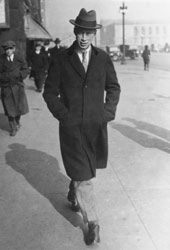
Greater success in Chicago. Cleofonte Campanini, music director of the Chicago Opera, expresses delight at the prospect of an opera based on a fable by his compatriot Gozzi, The Love for Three Oranges; a contract is signed in January, and despite the onslaught of scarlet fever and diphtheria in March, Prokofieff has the score ready by October. Campanini’s death in December throws plans for the premiere into disarray. Meanwhile Prokofieff begins a more ‘wild and passionate’ opera, The Fiery Angel; it will take him seven years to complete.
for sextet BH
Visits Paris to discuss revisions of Chout with Diaghilev. Returns in October to America, where Chicago’s wrangles over The Love for Three Oranges force another year’s postponement.
for voice and piano BH
Diaghilev’s planned presentation of Prokofieff to Parisian audiences through Chout is pre-empted by Koussevitzky’s concert performance of the Scythian Suite; both are successful, though Chout’s London premiere is coldly received. Completes work on Piano Concerto No.3 in Brittany, dedicating it to the Russian poet Konstantin Balmont, who is staying nearby and five of whose poems he sets to music around the same time. The Love for Three Oranges successfully premiered at the end of the year in Chicago under Mary Garden’s administration.
(1917-21) BH
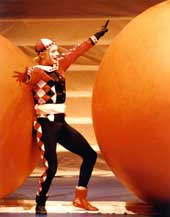
After four years resident in America returns to Europe, settling in Ettal in the foothills of the Bavarian Alps, his base for the next year and a half.
transcribed for piano. BH
Concert engagements in five European countries. Marries Lina and moves to Paris, where the first performances of Violin Concerto No.1 and Piano Sonata No.5 are indifferently received.
in C (first version) BH
Greater success in Paris with the more consciously modernistic Seven, they are Seven and revised version of Piano Concerto No.2. Faced with the charge of ‘living off old compositions’, begins to write a large symphony ‘of iron and steel’ and earns money in the meantime through a commission to write a short circus ballet, Trapeze. First son, Sviatoslav, born in February, but Prokofieff’s mother dies in December.
Koussevitzky conducts the premiere of the ‘difficult’ Symphony No.2, but Paris no longer finds Prokofieff a sensation. Diaghilev, nonetheless, is intrigued enough to commission another new ballet presenting the new Soviet spirit of construction in a way that will suit modish Parisian tastes, Le Pas d’acier. Returns to the United States for a concert tour beginning in December.
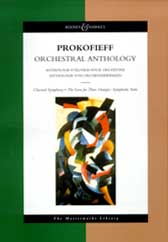
The Love for Three Oranges successfully performed in Leningrad. Works on the complex orchestration of The Fiery Angel, with the prospect of a Berlin premiere to be conducted by Bruno Walter.
First trip to the Soviet Union, giving recitals and appearances as soloist in Moscow, Leningrad and the Ukraine. At its June premiere, Le Pas d’acier revives his flagging reputation in Paris. Berlin production of The Fiery Angel cancelled; Leningrad shows interest in The Gambler, which he revises.
completed. Opera in five acts and seven scenes (1919-23, rev. 1926-7) BH
Portions of The Fiery Angel’s second act conducted by Koussevitzky in Paris; Prokofieff reworks the thematic developments of the opera into Symphony No.3. Diaghilev commissions another ballet, The Prodigal Son, and is amazed when Prokofieff completes it in a few months. Second son, Oleg, born in December.
version for full orchestra BH
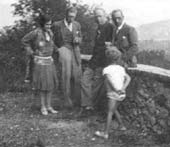
Brussels, not Leningrad, hosts the first performance of The Gambler. The Prodigal Son opens in Paris after clashes with Balanchine, the choreographer; Diaghilev dies shortly afterwards in Venice. Revisits Moscow, this time without concert engagements; shape of things to come in the Proletarian Musicians’ Union’s rejection of the ‘historically inaccurate’ Pas d’acier.
for orchestra completed (1925/29) BH
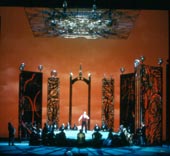
Extended USA concert tour. Works on two American commissions: String Quartet No.1 for the Washington Library of Congress and Symphony No.4, a reworking of themes from The Prodigal Son, for the 50th anniversary of the Boston Symphony Orchestra where Koussevitzky is now principal conductor. Composes a new ballet for the Paris Grand Opéra, On the Dnieper (Sur le Borysthène).
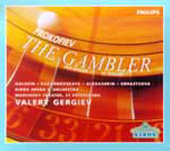
Composes Piano Concerto No.4 for Paul Wittgenstein, who has lost his right hand in the war, but the pianist rejects it outright. Concert appearances in most of the major European cities.
Symphonic Suite from The Gambler (1930-31) BH
Deux chansons Russes for voice and piano BH
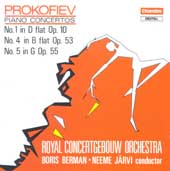
Plays his new Piano Concerto No.5 with Furtwängler and the Berlin Philharmonic, repeating his solo role in Moscow (November) and Leningrad (December), where Le pas d’acier is accepted in concert-suite form. Receives Belgoskino Commission to write his first film music, for Faintsimmer’s Lieutenant Kijé. First performance of Sonata for Two Violins takes place in Paris, half an hour before the premiere of On the Dnieper.
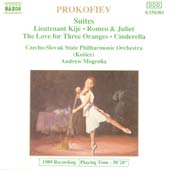
Though he tours America in January, Prokofieff spends most of the year in the Soviet Union, to hear the recording of his Kijé score and to work on a Shaw-Shakespeare compendium for the Moscow Kamerny Theatre, Egyptian Nights.
Writes Izvestia article on a ‘new simplicity’ in melody and form which matches his aims in the West over the past few years. Spends five months in USSR, discussing Kirov plans for Romeo and Juliet towards the end of the year.
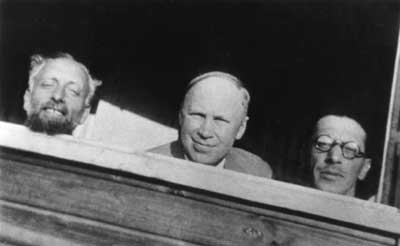
for piano (1933-34) BH
Piano score of Romeo and Juliet completed in September, alongside his last non-Soviet commission, Violin Concerto No.2, premiered by the French violinist Robert Soetens in Madrid.
Twelve Easy Pieces for piano BH
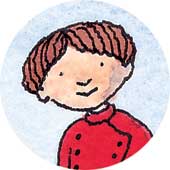
Moves his family to Moscow, but continues to tour in the west. Pravda attack on Shostakovich’s Lady Macbeth of Mtsensk initiates tighter state control over new music. Many cancellations of theatrical works and films with non-Soviet literary subject matter, including Romeo and Juliet and three Pushkin centenary projects for which Prokofieff has written extensive incidental music – Romm’s film of The Queen of Spades, Tairov’s stage adaptation of Eugene Onegin and Meyerhold’s radical production of Boris Godunov. Only Peter and the Wolf, written spontaneously for Natalia Satz’s Moscow Children’s Musical Theatre, reaches performance.
Ballet in four acts and epilogue BH*
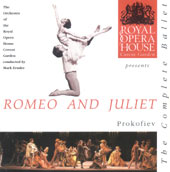
Conducts Suite No.2 from Romeo and Juliet in Leningrad. The score of the riotous and inventive Cantata for the Twentieth Anniversary of the October Revolution, Prokofieff’s second ‘national’ work after the Russian Overture of the previous year, provokes ‘more indignation than rapture’ among the bureaucrats and remains unperformed until 1966.
for brass band (1935/37) BH*
for chorus, military band, accordions and orchestra (1936-37) BH*
Final tour in the west; meets Walt Disney in Hollywood and is offered $2500 a week to write music for a film studio. Starts cinema work, but back in Russia collaborates with Sergei Eisenstein on the patriotic Alexander Nevsky. The premiere screening in December is a great success – not least with Stalin – though another first performance, of the austere Cello Concerto No.1, fails and Romeo and Juliet receives an unremarked premiere in the Czech city of Brno.
Incidental music for soprano and baritone soloists, and orchestra (1937-38) BH*
Music from Alexander Nevsky fashioned into a concert cantata alongside work on a new, ‘Soviet’ opera Semyon Kotko; Meyerhold, who is to direct the first production, is arrested for his outspokenness in July and executed in prison the following year; the oddly wistful melody that launches the short cantata Zdravitsa (A Musical Toast or Hail to Stalin) perhaps represents Prokofieff’s sense of loss. Meets Mira Mendelson, who is to become his second wife, in the Caucasian town of Kislovodsk.
Cantata for mezzo-soprano solo, chorus and orchestra (1928-39) BH*
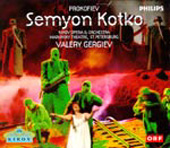
The Kirov finally stages Romeo and Juliet. Semyon Kotko goes ahead at the Stanislavsky Opera Theatre; Serafima Birman (later to play the scheming Euphrosynia in Ivan the Terrible) takes Meyerhold’s place as director, but the opera is not seen as a suitable ‘example to the masses’. Escapes into the world of the Sheridan-based opera The Duenna (Betrothal in a Monastery).
(1939/40) BH*
The Kirov finally stages Romeo and Juliet. Semyon Kotko goes ahead at the Stanislavsky Opera Theatre; Serafima Birman (later to play the scheming Euphrosynia in Ivan the Terrible) takes Meyerhold’s place as director, but the opera is not seen as a suitable ‘example to the masses’. Escapes into the world of the Sheridan-based opera The Duenna (Betrothal in a Monastery).
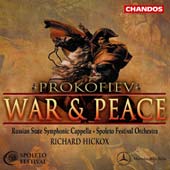
Sviatoslav Richter gives the first performance of Piano Sonata No.6 in Moscow. Prokofieff finally leaves Lina for Mira. The German invasion of Russia in June turns his thoughts from a new ballet, Cinderella, to an opera based on Tolstoy’s War and Peace. Evacuated with Mira to Nalchik, where he composes String Quartet No.2, on local Kabardanian Themes.
Children’s Suite for small orchestra BH
Works on War and Peace and the whirlwind Piano Sonata No.7 in Tbilisi. Travels to Alma-Ata in Central Asia to collaborate with Eisenstein on Ivan the Terrible, and completes scores for several minor patriotic films.
(1939-42) BH*
Khan Buzay Opera (unfinished)
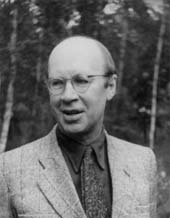
Six weeks in Moscow followed by four months back in Alma-Ata. Receives his first Stalin Prize for Piano Sonata No.7, triumphantly premiered by Richter in January. Piano score of Cinderella and Flute Sonata completed in Perm. Back in Moscow by October.
Cantata for soprano and tenor soloists, chorus and orchestra (1942-43) BH*
Concentrates on two major projects completed during summer in the country, at Ivanovo: Piano Sonata No.8, premiered at the end of the year by Emil Gilels, and Symphony No.5. First public hearing of the original eleven-scene version of War and Peace in October is moderately successful, though stagings are postponed and the event is soon eclipsed by the screening of Ivan the Terrible Part One, for which Prokofieff and Eisenstein both receive class one Stalin Prizes.
transcription of Flute Sonata (1943-44) BH*
Moscow premiere of Symphony No.5, Prokofieff’s last appearance as conductor, coincides with the impending defeat of the Germans. Several days later, suffers concussion of the brain after a fall and never recovers his health. Able to work on music for Ivan the Terrible Part Two and revisions to War and Peace in the autumn, and celebrates victory with the bizarrely-scored Ode to the End of the War. Cinderella’s Bolshoi premiere takes place in November.
for orchestra BH*
Triumphant Leningrad stagings of the revised first part of War and Peace at the Maly Theatre, conducted by its champion Samosud, and of The Duenna at the Kirov Theatre. Prokofieff and Mira purchase a dacha in Nikolina Gora, where he spends most of his time. Composes the spare, tragic Violin Sonata No.1 and works on his bleak orchestral masterpiece, Symphony No.6. Ivan the Terrible Part Two criticised for ‘historical inaccuracies’ and banned.
for violin and piano completed (1938/46) BH*
Oratorio for male speaker, contralto and baritone soli, children's and mixed chorus and orchestra (1942-46) BH*
The second (‘war’) half of War and Peace reaches dress rehearsal in Leningrad, only to be withdrawn following official criticism and Prokofieff’s refusal to cut offending scenes. Composes two introspective works at Nikolina Gora, the disarmingly simple Piano Sonata No.9 and the Sonata for Solo Violin. Radically expands Symphony No.4 along the lines of its successor. Mravinsky conducts Symphony No.6 which is hailed at its October premiere, but publicly denounced and withdrawn shortly afterwards.
(1945-47) BH*
Prokofieff’s official marriage to Mira leaves Lina, as a resident alien, unprotected; she is arrested on trumped-up charges and deported to a Siberian labour camp. Andrei Zhdanov, Stalin’s right-hand man, denounces ‘formalism in music’ at a February conference. Prokofieff is powerless; his works are unperformed over the following months and even his ideologically correct new opera, The Story of a Real Man, is ferociously denounced at the end of the year.
Opera in four acts (1947-48) BH*
Distant Seas (unfinished)
A new full-length ballet score, The Tale of the Stone Flower, is deemed unacceptable and a Bolshoi production postponed. Prokofieff finds some consolation in his musical friendship with the young Mstislav Rostropovich, for whom he composes a cello sonata.
Attends his last premiere, the first public performance of the Cello Sonata in March, Prokofieff works slowly on the oratorio On Guard for Peace and the suite for children Winter Bonfire. Concert-hall rehabilitation for his works begins.
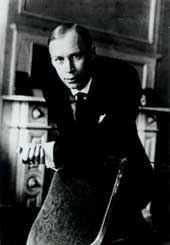
Suite for narrator, boys' chorus and orchestra (1949-50) BH*
Oratorio for narrator, contralto, boy alto, boys’ chorus, chorus and orchestra BH*
Richter gives the first performance of Piano Sonata No.9 shortly before Prokofieff’s sixtieth birthday, relayed by telephone to the composer from the Union of Composers. Rostropovich collaborates with him on the transformation of Cello Concerto No.1 into what will eventually become the very different Sinfonia-Concertante.
for cello and orchestra (1950 – 52) BH
Mistress of the Copper Mountain from The Stone Flower Suite for orchestra (unrealised)
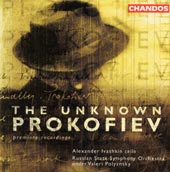
Completion of the Sinfonia-Concertante and the enigmatic, only superficially simple Symphony No.7, conducted by Samosud in October; Prokofieff makes his last concert-hall appearance. Makes sketches for the Cello Concertino, revises Piano Sonata No.5 and plans a revision of Symphony No.2.
(1951-52) BH*
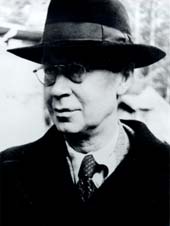
Writes his childhood autobiography and hears news of Bolshoi rehearsals for The Stone Flower. Plans a series of new works and composes up until his death on 5 March, only hours before that of Stalin.
Symphony No.2 (second version, unfinished)
Piano Sonata No.10 (sketch)
Piano Sonata No.10 (sketch)
Piano Sonata No.11 (sketch)
Piano Sonata No.11 (sketch)
Publishers
BH = Boosey & Hawkes copyright owner and sole publisher for all countries of the world
BH* = Boosey & Hawkes copyright owner and sole publisher of the UK, the British Commonwealth (excluding Canada), Eire and South Africa
For = Robert Forberg

